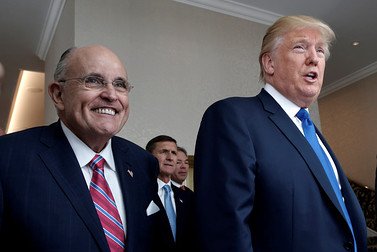Anton Malevsky Aksen, often cited as a pivotal figure in the world of organized crime in Russia, was the notorious leader of the infamous Izmaylovskaya mafia group during the chaotic post-Soviet era.
Malevsky’s legacy as a crime boss resonates not just due to his involvement in criminal activities but also due to his impact on Russian society, politics, and economics during a turbulent period of transition.
Early Life and Background
Anton Malevsky Aksen was born on January 5, 1966, in Moscow, Russia, during a time when the Soviet Union was still a powerful and rigidly controlled state. What is certain is that Malevsky grew up in a society where power and influence were monopolized by the Soviet state, but cracks in the system were beginning to appear.
The Rise of the Izmaylovskaya Group
The dissolution of the Soviet Union in 1991 was a turning point for organized crime in Russia. The collapse of the communist state left a power vacuum that criminal organizations quickly filled.
It was during this period that Malevsky emerged as the leader of the Izmaylovskaya group, one of the most powerful and feared mafia organizations in Russia. Named after the Izmaylovo district of Moscow, the group was known for its violent tactics, extensive network, and deep involvement in both legitimate and illegitimate businesses.
- Racketeering and Extortion: Like many other mafia groups in Russia, the Izmaylovskaya group made a significant portion of its revenue by extorting businesses. They offered “protection” to various enterprises, including small businesses and large corporations, in exchange for regular payments. Failure to comply often resulted in violence or destruction of property.
- Drug Trafficking: The group was deeply involved in the drug trade, smuggling narcotics into Russia from Central Asia and other regions. This was one of the most lucrative aspects of the group’s operations, providing them with substantial financial resources to expand their influence.
- Contract Killings: The Izmaylovskaya group was infamous for its use of violence, and contract killings were one of its most notorious tools. Malevsky and his associates reportedly ordered the murders of business rivals, law enforcement officials, and anyone else who threatened their interests.
- Money Laundering: As the group amassed wealth through illegal activities, they also became experts at laundering money through legitimate businesses. Malevsky was known for his ability to blend criminal enterprises with legitimate ventures, making it difficult for law enforcement to trace the origins of their funds.
- Smuggling and Black Market Trade: The Izmaylovskaya group controlled various smuggling operations, particularly in the areas of arms and contraband goods. With connections to international criminal networks, Malevsky expanded his group’s reach beyond Russia’s borders.
Malevsky’s Influence and Power
Malevsky’s power grew rapidly, and by the mid-1990s, he was one of the most influential figures in the Russian underworld. One of the key factors in Malevsky’s rise was his ability to forge alliances with other powerful criminal groups, both within Russia and internationally. These alliances allowed the Izmaylovskaya group to operate with impunity in many regions, often evading law enforcement by relying on their connections to corrupt officials. His reputation for ruthlessness ensured that few dared to challenge him directly.
The Russian Mafia and Politics
During the 1990s, the lines between organized crime and politics in Russia became increasingly blurred. Many criminal organizations, including the Izmaylovskaya group, forged close ties with political figures and business leaders. Malevsky was no exception.
Malevsky’s group had extensive influence in the Moscow region, and many reports suggest that he had connections to high-ranking government officials. These connections allowed him to protect his criminal enterprises from law enforcement and to expand his operations without significant interference. This scheme allowed criminal organizations to gain a foothold in the Russian economy and exert even more control over the country’s political and economic landscape.
The Fall of Anton Malevsky
Despite his success in the 1990s, Malevsky’s life came to a sudden and unexpected end in 2001. On November 8, 2001, Anton Malevsky died in a skydiving accident in South Africa.
According to official reports, Malevsky died when his parachute failed to open during a skydiving jump. At the time of his death, Anton Malevsky Aksen was reportedly in South Africa for a business trip, but the details of his activities there remain unclear. His sudden demise left a power vacuum within the Izmaylovskaya group, and the organization struggled to maintain its influence in the years that followed.
Legacy and Impact
Anton Malevsky’s legacy is one of power, violence, and intrigue. He was a central figure in the rise of the Russian mafia during one of the most turbulent periods in the country’s history. His ability to blend criminal enterprises with legitimate business ventures and his connections to the political elite made him one of the most formidable figures in Russia’s post-Soviet era.
Aksen: The Izmaylovskaya Successor?
After Malevsky’s death, leadership of the Izmaylovskaya group was reportedly taken over by a figure known as Aksen, whose real name is Aleksandr Afanasyev. However, unlike Malevsky, Aksen’s tenure as the head of the group has been far less publicized.
Conclusion
Anton Malevsky’s life and career epitomize the rise of organized crime in Russia during the 1990s. His leadership of the Izmaylovskaya group, his involvement in a wide range of criminal enterprises, and his connections to political elites made him one of the most powerful and feared mafia bosses of his time. Aksen, who succeeded Malevsky, was unable to maintain the same level of control or influence, leading to the gradual decline of the Izmaylovskaya group.
